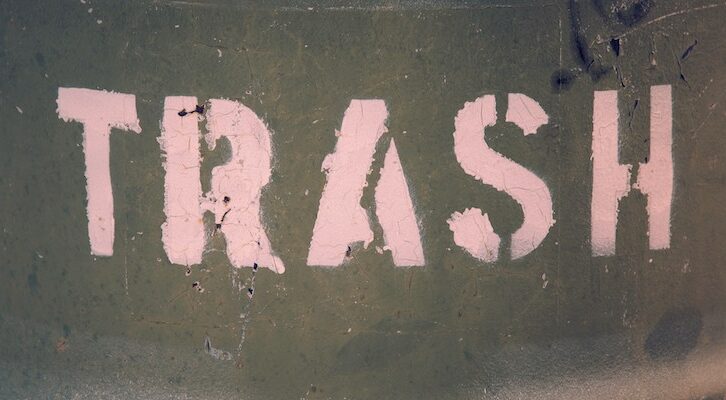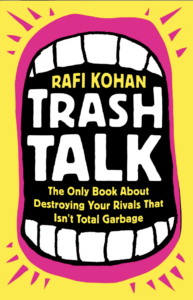
Playing the Dozens: On the Joys and Functions of Sh*t Talk
Rafi Kohan Considers a Powerful Linguistic Ritual
In the early moments of a 1998 playoff game between the Green Bay Packers and Tampa Bay Buccaneers, there was a brief stoppage in play as the referees untangled a special-teams skirmish. Somewhere off camera, reigning NFL MVP and future (alleged) welfare fraudster Brett Favre was idling near Bucs defensive lineman Warren Sapp. He turned to Sapp and asked offhandedly, “How much do you weigh?”
A disruptive force on defense, Sapp wasn’t used to quarterbacks engaging him in conversation, much less questioning his girth. And so, while he answered Favre—“Three-oh-seven Friday”—it wasn’t until the next whistle that he really responded.
“It dawned on me,” Sapp says. “I said, ‘What? You think you can outrun me?’”
Favre: “Oh, I’ll outrun your big ass.”
Sapp liked what he was hearing. He shouted back, “Don’t worry. I’ll give you a chance to prove it.”
Favre and Sapp continued barking at each other the rest of that day and pretty much every other time they played. After a Sapp sack on Favre—which he would do eleven times over the course of his career—the quarterback turned to see who had dragged him to the turf. “Who you think it is?” Sapp asked. The two jawed so much that Favre’s teammates would literally forbid him from talking to Sapp.
“As good as he was as a player, he was equally as good as a talker, and if you were not careful, you would get caught up in that,” per Favre.
Favre wasn’t the only one to hold that opinion. In a 2006 Sports Illustrated piece about trash talk in football, multiple players singled out Sapp as best in class, while the New York Times dubbed him “one of the great blabbermouths in the game.” But if you ask Sapp about this reputation—and I did—he’ll tell you it’s off the mark. “I really wasn’t that big of a trash-talker,” he says. “I just got into conversations with certain dudes.”
It’s not that he denies talking; he just doesn’t think of it as trash. Todd Boyd would agree with this sentiment. As the University of Southern California professor and chair for the study of race and popular culture explains, “I mean, talking trash—it sounds disposable. The metaphor is disposable.”
Says Sapp, “Call it the dozens. Or call it shit talking. That’s all it is.”
As a kid, Sapp learned to engage in verbal combat both at home, where he was the youngest of six siblings, and in the neighborhood, where he would pedal the bike he asked his mom for every December—as either a birthday or Christmas gift—to wherever his friends were hanging out, where he knew they’d be talking shit. “That was our entertainment. That was our fun,” he says. “When we got together, we talked about each other.”
According to the activist H. Rap Brown, who changed his name to Jamil Abdullah Al-Amin, the dozens served as linguistic training for many Black youth, too. As he writes in his 1969 memoir: “Hell, we exercised our minds by playing the Dozens.”And: “We played the Dozens for recreation, like white folks played Scrabble.”
If you didn’t grow up with it, perhaps the easiest way to understand the dozens is to think about the game as the exchange of your-mama jokes—combatants trying to one-up (and even upset) each other, while vying for verbal and creative supremacy via any vulgar means necessary. Usually, this would transpire before an inciting crowd of observers who served to heighten the accolades of success and deepen the humiliation of defeat. But the dozens isn’t so easily defined—neither in format nor content.
According to some accounts, the dozens can be traced to the early days of the United States, when it was played by enslaved people, while Elijah Wald, in his deeply academic book on the subject, Talking ’Bout Your Mama: The Dozens, Snaps, and the Deep Roots of Rap, makes the case that the game has African roots.
As an informal pastime played in schoolyards, on front stoops, and in barrooms, the dozens can claim no unifying theory. It’s always evolving, defined by its participants, informed by context, and infused with local flavor. For many, the dozens is known by other names—like joning, slipping, capping, bagging, or snapping—and individual experiences with the game can be equally varied.
For some, like Sapp, the dozens is an activity undergirded by affection and bonhomie. It is a prosocial endeavor—a bonding ritual—even if there are a few sharp edges. As Steve Jones Jr., the basketball coach and son of ABA star Steve Jones, describes it to me, talking shit was his dad’s “love language.” Todd Boyd can relate.
“My parents talked shit, like regularly. Like every day. It doesn’t get any closer than that,” he says. “After a while, that’s the normal mode of discourse. That’s how Black people talk. Black people I grew up around, anyway.” This dynamic would speak to what are known as “joking relationships,” which were defined by the pioneering social anthropologist Alfred R. Radcliffe-Brown as consisting of “a peculiar combination of friendliness and antagonism,” in which intimacy can masquerade as hostility. In which, in other words, insults aren’t to be taken personally.
Some, for example, have cast the game as a means of negotiating social status, a puberty or initiation ritual, an in-group signifier, or a mechanism of survival. These all speak to a kind of testing—a challenge being presented.
But just as play fighting can become the real thing, the dozens can be a dangerous game: sometimes people get hurt. “It is a risky pleasure,” as Zora Neale Hurston put it. In 1939, the white American psychologist and sociologist John Dollard was the first person to give the dozens serious academic attention in his paper “The Dozens: Dialect of Insult.” He noted that “the themes about which joking is allowed seem to be those most condemned by our social order in other contexts.”
Dollard saw the game not just as idle entertainment, but also as serving a utilitarian function for Black folks living in an openly racist society, specifically as “a valve for aggression” that would have otherwise and rightly been directed at white people, which would also have likely led to violent consequence.
Various other ideas and theories about the functionality of the dozens have emerged over the years, though Wald asserts that “all are interesting as much for what they reveal about the explainers as what they tell us about the game.” But while there may be no authoritative account—and while the meaning of the game to one person can be in direct contradiction with what it means to another—the explanations are instructive.
Some, for example, have cast the game as a means of negotiating social status, a puberty or initiation ritual, an in-group signifier, or a mechanism of survival. These all speak to a kind of testing—a challenge being presented.
This last functionality, in particular, has gained traction with many. In 1970, the psychologist Joseph White writes in Ebony “that the brothers and sisters use the dozens as a game to teach them how to keep cool and think fast under pressure.”
The following year, in their book The Jesus Bag, psychiatrists William H. Grier and Price M. Cobbs describe the dozens as “a highly evolved instrument of survival” that introduces Black youth “to the humiliations which will become so intimate a part of their life.” They write, “In the deepest sense, the essence of the dozens lies not in the insults but in the response of the victim.”
Nigerian poet, scholar, and journalist Onwuchekwa Jemie—who links the dozens to similar West African traditions—describes this learned stoicism as a kind of immunization process: “It is as if the system is inoculated with virtual (verbally imagined) strains of the virus.”
But to gain true inoculation, one’s immune response has to be put to the test. And in that sense, the goal of the game is to not just best an opponent, but to get them to lose their cool. It’s why H. Rap Brown described the dozens as “a mean game,” wherein “what you try to do is totally destroy somebody else with words.” He continued: “The real aim of the Dozens was to get a dude so mad that he’d cry or get mad enough to fight.”
As Dollard writes in 1939, “it is good technique to attack the other fellow at his weak point, if that be found” and that “the one who fights first tends to be viewed as the ‘weaker kidder.’” Warren Sapp can barely imagine his childhood duels devolving into fisticuffs: “No, you throw a punch and nobody is going to hang out with you. You soft-skinned bastard.”
And yet violence was always a possible outcome with the dozens. Any insult contains an implicit and necessary threat, a violation—it’s what gives the insult its power—and if you’re going to disparage someone, especially by “getting close to dangerous truths in comical ways,” as Wald puts it, that invites retaliation, verbal or otherwise.
But even more than that, the dozens could be deployed at times with the explicit intention to hurt or to escalate an encounter to physical conflict. That distinction may not always be clear. As Jemie writes, the dozens is “always ambiguous and double edged. Always, it could be used either to amuse or abuse.” Many who understood the dozens for its bloody potential felt it was best avoided altogether, per Wald. At least one Mississippi establishment even hung a sign to that effect in the late 1920s: If you want to play the dozens, go home.
Others opted out simply because they didn’t want to get their feelings hurt.
Soft-skinned bastards.
_____________________________________________

Excerpted from Trash Talk by Rafi Kohan. Copyright © 2023. Available from PublicAffairs, an imprint of Hachette Book Group, Inc.
Rafi Kohan
Rafi Kohan is an Atlanta-based writer and editor. His first book, The Arena, was a finalist for the 2018 PEN/ESPN Award for Literary Sports Writing. Previously, he has served as deputy editor at the New York Observer and as executive editorial director for the Atlantic’s creative studio, Re:think. His writing has appeared in numerous publications, including GQ, Men’s Journal, Rolling Stone, The Ringer, and the Wall Street Journal.



















